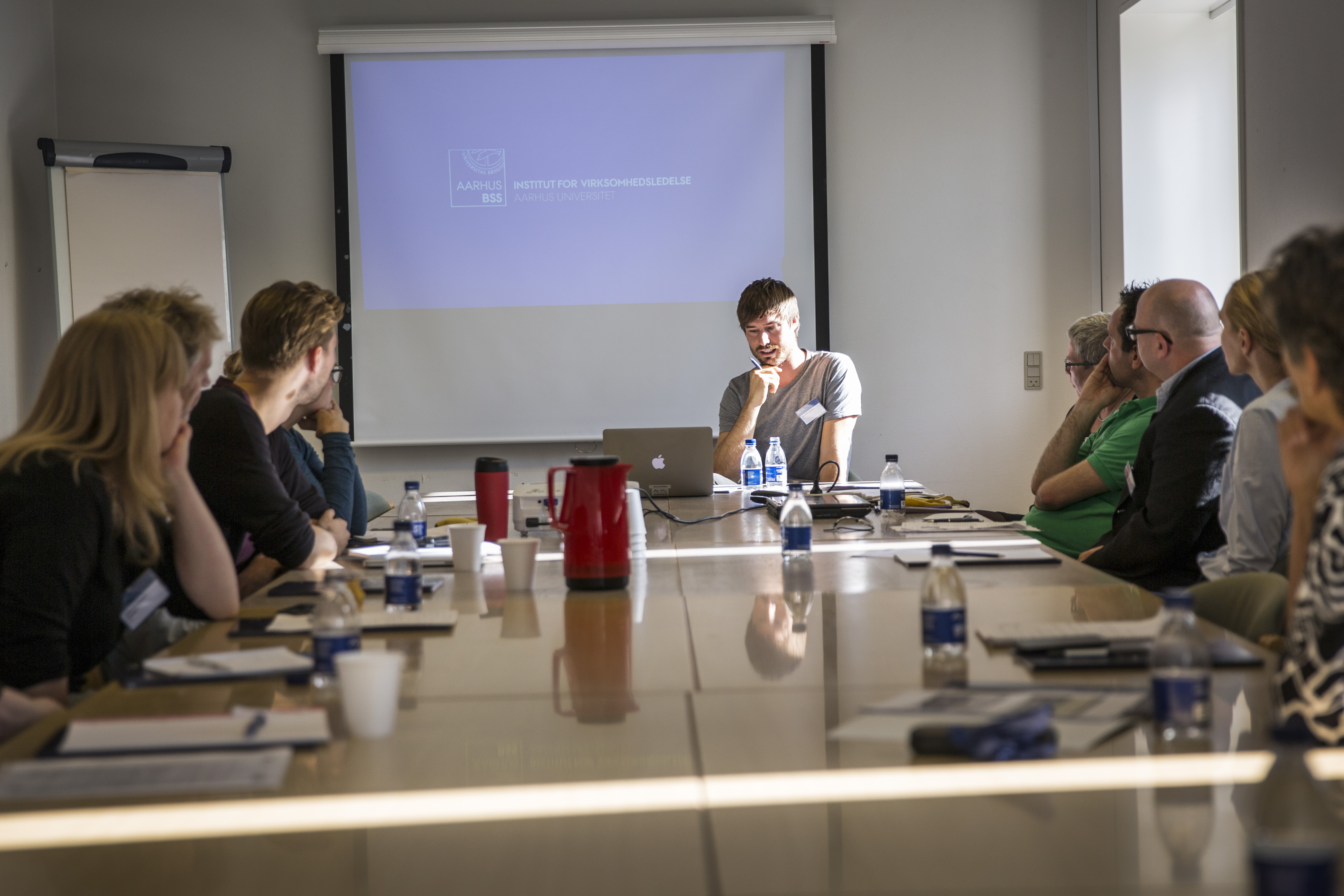Lecturer at Political Science: Frustration is a sign of change!
Experiments with peer feedback. The level of interest in how other teachers work to integrate feedback in their teaching was high, as 90 lecturers from all departments at Aarhus BSS gathered for a day of inspiration on effective feedback at the beginning of October.

One of the lecturers who gave a presentation on how he has handled peer feedback in relation to its students was Assistant Professor Henrik Bech Seeberg, who lectures in public policy at the Department of Political Science.
The 250 fifth semester students, who are divided into nine classes, have been accustomed to having the material reviewed by a lecturer using chalk and a blackboard.
But as Seeberg put it, blackboard teaching "didn’t give anything at all in terms of developing the students' independence." So as of this semester, the form of teaching has been fundamentally changed.
How do you construct an argument?
As before, the students work with a case as part of the public policy course. But now the classroom lessons have been reduced by half to give students the opportunity to write essays in study groups.
The groups must write a total of four essays, each 5,000 words in length, during the course of the semester. In turn, each essay should be understood in this context as an analysis of a case, such as e.g. an analysis of ObamaCare based on an optional theory.
READ MORE: Voxpop: When was the last time you received good feedback on an assignment?
The study group meets with two other study groups to give feedback. The students give one another feedback and receive feedback from the student teachers. A total of 20 minutes is allocated to feedback on each essay.
"We wanted to increase written communication in this course and train the students in constructing a good argument. It’s also a skill they train by reading the other groups' essays, because they see how others have approached the task," said Seeberg.
The students submit their essays on a Sunday evening. Seeberg then meets with the student teachers in his office on the following Tuesday to discuss the various essays, and to give the student teachers supervision before they are given the task of providing feedback to the students.
Both satisfied and dissatisfied
The students have shown different attitudes to peer feedback.
"Many have already told the student teachers that they’re happy with the process. But there are also many who visit the student teachers during office hours and are frustrated with working on the case."
He continued:
"The students become frustrated when they work on an essay because it’s hard. But frustration is a sign of change, so it only makes sense to evaluate this once they’ve submitted their exam assignments on 25 January."
What about learning objectives?
That is not to that he cannot see the issue from the students' point of view, and he acknowledges that a lot has been placed on their shoulders with peer feedback. He and the student teachers therefore also continue to discuss how they can ensure that everyone achieves the learning objectives.
READ MORE: What is good feedback - and who has the competence to give it?
"I can also worry that they haven’t learned the theories and have just become good at writing essays", said Seeberg with a wry smile.
He continued:
"But to make sure that everyone achieves the learning objectives, we’ve taken a very pedagogical approach. We’ve held introductory lectures and introductory lessons on writing essays and posted all of the material on Blackboard. So now we’ll have to wait and see what happens at the exam."
"I've chosen to show understanding for any frustration from the students, but also to be a little deaf towards it, because I believe that the students will see it’s a good idea when they’re sitting there alone with their assignment at the exam and understand what they’ve learned and that they can make use of it."
Translated by Peter Lambourne

